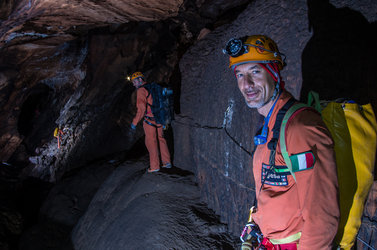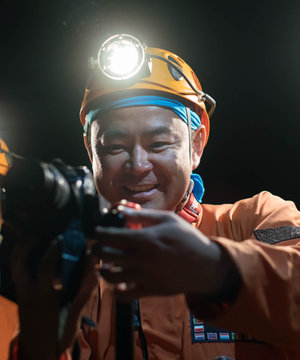Accept all cookies Accept only essential cookies See our Cookie Notice

About ESA
The European Space Agency (ESA) is Europe’s gateway to space. Its mission is to shape the development of Europe’s space capability and ensure that investment in space continues to deliver benefits to the citizens of Europe and the world.
Highlights
ESA - United space in Europe
This is ESA ESA facts Member States & Cooperating States Funding Director General Top management For Member State Delegations European vision European Space Policy ESA & EU Space Councils Responsibility & Sustainability Annual Report Calendar of meetings Corporate newsEstablishments & sites
ESA Headquarters ESA ESTEC ESA ESOC ESA ESRIN ESA EAC ESA ESAC Europe's Spaceport ESA ESEC ESA ECSAT Brussels Office Washington OfficeWorking with ESA
Business with ESA ESA Commercialisation Gateway Law at ESA Careers Cyber resilience at ESA IT at ESA Newsroom Partnerships Merchandising Licence Education Open Space Innovation Platform Integrity and Reporting Administrative Tribunal Health and SafetyMore about ESA
History ESA Historical Archives Exhibitions Publications Art & Culture ESA Merchandise Kids Diversity ESA Brand Centre ESA ChampionsLatest
Space in Member States
Find out more about space activities in our 23 Member States, and understand how ESA works together with their national agencies, institutions and organisations.
Science & Exploration
Exploring our Solar System and unlocking the secrets of the Universe
Go to topicAstronauts
Missions
Juice Euclid Webb Solar Orbiter BepiColombo Gaia ExoMars Cheops Exoplanet missions More missionsActivities
International Space Station Orion service module Gateway Concordia Caves & Pangaea BenefitsLatest
Space Safety
Protecting life and infrastructure on Earth and in orbit
Go to topicAsteroids
Asteroids and Planetary Defence Asteroid danger explained Flyeye telescope: asteroid detection Hera mission: asteroid deflection Near-Earth Object Coordination CentreSpace junk
About space debris Space debris by the numbers Space Environment Report In space refuelling, refurbishing and removingSafety from space
Clean Space ecodesign Zero Debris Technologies Space for Earth Supporting Sustainable DevelopmentLatest
Applications
Using space to benefit citizens and meet future challenges on Earth
Go to topicObserving the Earth
Observing the Earth Future EO Copernicus Meteorology Space for our climate Satellite missionsCommercialisation
ESA Commercialisation Gateway Open Space Innovation Platform Business Incubation ESA Space SolutionsLatest
Enabling & Support
Making space accessible and developing the technologies for the future
Go to topicBuilding missions
Space Engineering and Technology Test centre Laboratories Concurrent Design Facility Preparing for the future Shaping the Future Discovery and Preparation Advanced Concepts TeamSpace transportation
Space Transportation Ariane Vega Space Rider Future space transportation Boost! Europe's Spaceport Launches from Europe's Spaceport from 2012Latest
Luca on exploration
Thank you for liking
You have already liked this page, you can only like it once!
ESA astronaut Luca Parmitano spent six months on the International Space Station, is a veteran of two spacewalks and has taken part in ESA’s CAVES and Pangaea courses as well as NASA’s underwater training mission NEEMO.
In this talk held at ESA’s astronaut centre near Cologne, Germany on 16 February 2017, Luca talks about astronauts and exploration and how astronauts train and prepare for exploring our universe and the similarities between missions on Earth and in space.
Space agencies are always looking for ways to prepare and train for spaceflight without leaving Earth. ESA sends astronauts underground in Sicilian caves and NASA goes underwater. Astronauts from all Space Station partners join to make the experience as realistic as possible – working efficiently and safely with a culturally diverse team is part of the package.
ESA’s CAVES course stands for Cooperative Adventure for Valuing and Exercising human behaviour and performance Skills. The two-week expedition prepares astronauts to work safely and effectively in multicultural teams in an environment where safety is critical – in caves.
The Pangaea course is designed to provide European astronauts with introductory and practical knowledge of Earth and planetary geology to prepare them to become effective partners of planetary scientists and engineers in designing the next exploration missions. The course also aims to give astronauts a solid knowledge in the geology of the Solar System from leading European scientists.
NASA Extreme Environment Mission Operations sortie, or NEEMO, has a team of four living and working in the Aquarius underwater research station off the coast of Florida, USA. For two weeks they live and work almost 20 m underwater to test tools and techniques for spacewalks as they venture outside the base in full scuba gear. By adjusting their buoyancy, the aquanauts can simulate the gravity levels found on the Moon, Mars and asteroids.
-
CREDIT
ESA -
LICENCE
ESA Standard Licence
-
Live Footage
-
-
-
-
-
-

Exploring CAVES – 2014

Luca underground caves training

Aki Hoshide CAVES

CAVES 2019 crew















 Germany
Germany
 Austria
Austria
 Belgium
Belgium
 Denmark
Denmark
 Spain
Spain
 Estonia
Estonia
 Finland
Finland
 France
France
 Greece
Greece
 Hungary
Hungary
 Ireland
Ireland
 Italy
Italy
 Luxembourg
Luxembourg
 Norway
Norway
 The Netherlands
The Netherlands
 Poland
Poland
 Portugal
Portugal
 Czechia
Czechia
 Romania
Romania
 United Kingdom
United Kingdom
 Slovenia
Slovenia
 Sweden
Sweden
 Switzerland
Switzerland


























